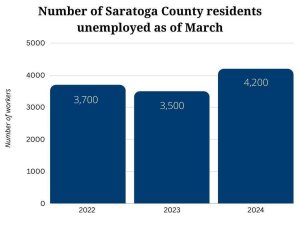The University of Alabama at Birmingham has made the announcement that it will drop football as one of their Division I athletic programs.
University President Ray Watts, who met with the players and coaches before the announcement was made two weeks ago, had this to say:
"The fiscal realities we face—both from an operating and a capital investment standpoint— are starker than ever and demand that we take decisive action for the greater good of the Athletic Department and UAB," Watts said in a statement released by the university. “As we look at the evolving landscape of NCAA football, we see expenses only continuing to increase. When considering a model that best protects the financial future and prominence of the athletic department, football is simply not sustainable."
Legion Stadium is the home field and it is about to become the elephant in the room, the campus!
UAB is the first major college program since Pacific in 1995 to shut down their football program. Watts also pointed out that they needed $22 million to upgrade their stadium and in the next five years it should cost the school $49 million to sustain the football program, which includes the stadium.
What about the players and football staff? Where do these hapless souls go and what do they do now?
Head coach Bill Clark, who has 2 years left in his contract of $500,000 a year, said, "This is one of the most difficult days that I have ever had to endure in my personal as well as my coaching career." He went on to say, "I am absolutely heartbroken for my players and my assistant coaches."
UAB is a member of Conference USA, which has a history of schools that in earlier years looked to drop football. Schools like Tulane, Rice and Western Kentucky considered dropping their expensive football programs, but all decided that it was in the best interest of the school to maintain their football teams.
Some of these colleges were even considering moving either to Division I-A, or Division III. In retrospect, they all came to the conclusion that their institutions needed a football program to keep its collegiate environment, which is also an attraction of prospective students to their campuses, which is a big draw.
In relationship to Conference USA, the University of Alabama-Birmingham, by dropping football, might have jeopardized their membership and commitment to the league.
There is also concern from off-shoots of the football program, like the marching band and the cheerleading squad. Many are on some sort of financial assistance/aide from UAB. The university is also cutting bowling and rifle programs, a combined expense that would save the college $400,000 to $600,000 a year.
Dan Rascher, a sports economic professor at the University of San Francisco said colleges often underestimate the positive impact of athletics, both in the way they account for athletic spending and other financial benefits teams provide.
"Football does have an effect on admissions, enrollment and donations," he said. "It's hard for schools to wrap their arms around things like this because they don't necessarily see them on the athletic department's budget sheet. A few years down the road, UAB could wonder why it's not as attractive to students."
This came from a Dec. 8, 2014 article from the New York Times, written and researched by Zach Schonbrun and Ben Strauss.
What about the players? The school will honor the athletic scholarships for all of the players and the coaches will be paid their salaries.
Makes you wonder, if you have to pay these people, why not keep football in place, at least for another couple of seasons? There have been protests by a large number of the student body and the players, which includes cheerleaders and marching band members.
I'm not sure what the deal is with honoring any scholarship or partial scholarships of the band and cheering squad. I will guess that the school will have to honor these awards.
I understand the economics that UAB and Watts are facing, but I wonder if there was enough of an effort to reach out to alumni and/or other prominent supporters?
There are many articles and editorials in the local press in Birmingham, from alumni and local citizens expressing their will to donate money.
Watts insists that killing football was not his goal. His main reason behind this decision is that football is just too expensive. The math is: 85 players times an estimate of $52,000 a year per player, an estimate done by the organization of CarrSports, which includes all of the cost per individual, not just room and board, and tuition. This equals $4.4 million a year.
I question that price tag. I think it's extremely over estimated. An in-state student pays $15,000 a year and out-of-state is $22,000. Where does $52,000 come from?
And, according to Andy Schwarz, who writes for Vice Sports, that cost estimate by CarrSports is out in left field.
He says that UAB can afford football. He states, in his article about Alabama-Birmingham football, that the question isn't having the money or not having the money; it's making smart investments versus dumb ones.
Is football a good investment? As an institution, UAB brings in a little more than $1 billion annually. A $22 million, one-time upgrade to its football facilities—with a 10 year bond—it's roughly $2.5 million annual payment. If UAB wants to grow and be a school that attacks quality students, football teams and especially winning ones, are highly-effective University marketing tools.
There is so much more about this story that I just don't have the space for, but to finish this topic here's what needs to be considered. The school will lose $1.2 million from Conference USA, and could be dropped from the league. In 2011-12, UAB received $1.65 million in contributions, mainly from football boosters.
They get money from TV contracts for football and there are many other dollars coming from outside sources that could be lost, like apparel and concession revenue.
Finally, what happens to the supporting merchants from the surrounding community? These people are left out in the cold.
This is a losing scenario for the University of Alabama-Birmingham, and a non-productive move by UAB's Board of Trustees and Administration!


























 How to resolve AdBlock issue?
How to resolve AdBlock issue? 









